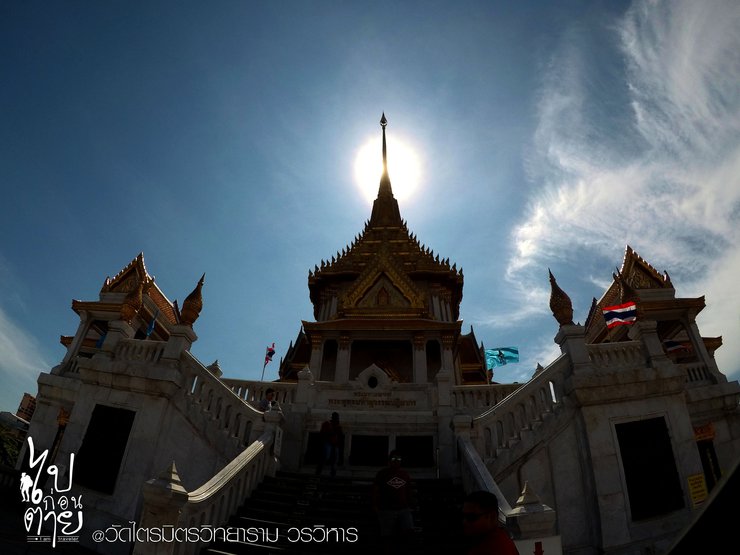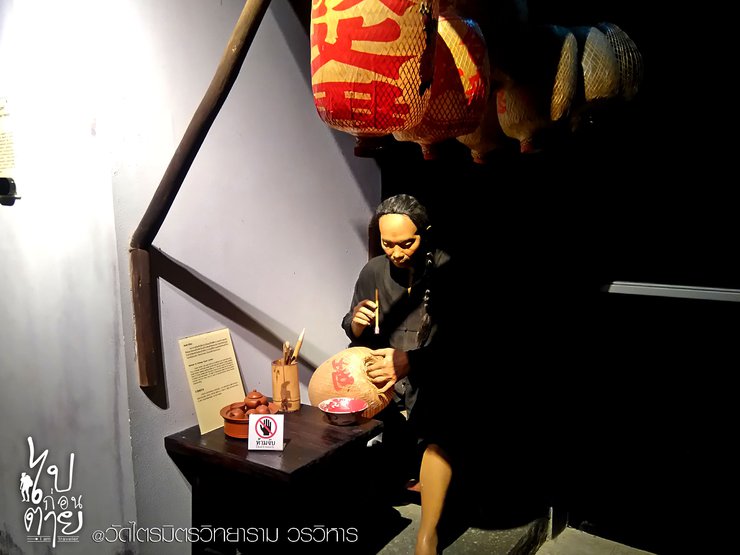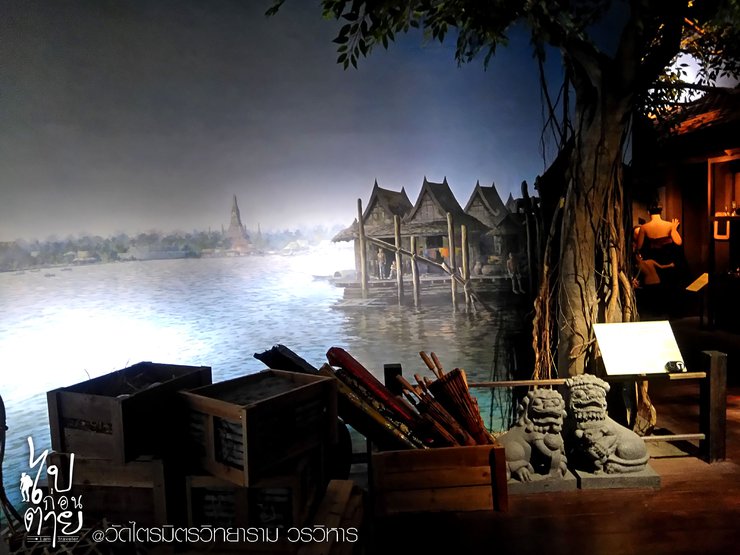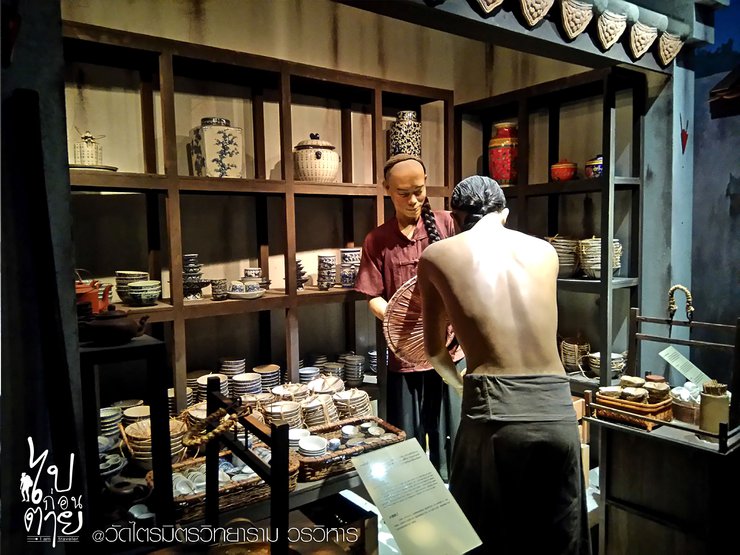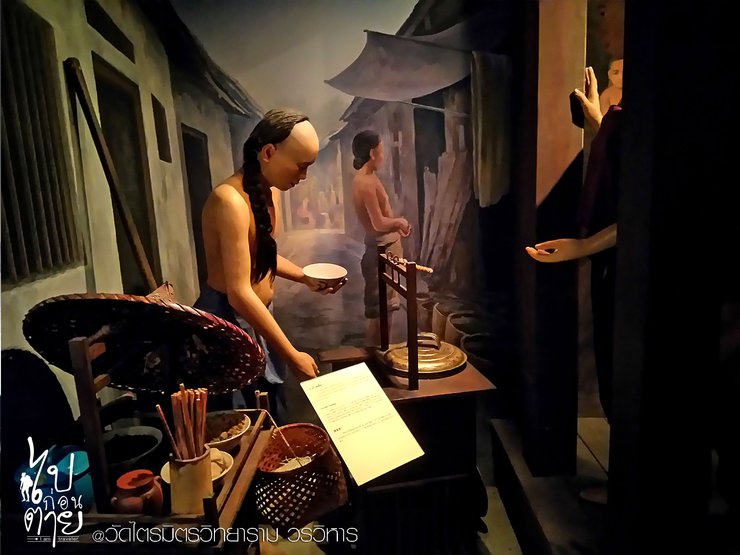Connect with me on Facebook Fan Page or follow my blog on Govivigo.
Travel log September 9, 2017
Today, we will visit a temple. After indulging in worldly pleasures for so long, it's time to embrace our spiritual side. Aside from offering prayers and making merit, Wat Traimit Witthayaram Worawihan boasts another fascinating aspect that rivals the religious significance of the temple itself.

If visiting a temple could offer not only merit but also knowledge, wouldn't that be appealing?
Yaowarat History Center
This historical center is located on the second floor of the Phra Maha Mondop, Wat Traimit Witthayaram Worawihan. It is open to the public from Tuesday to Sunday, from 8:00 AM to 5:00 PM.
For inquiries, please contact us at 0 2623 3329, 0 2623 1227 or visit the Wat Traimit website at http://www.wattraimitr-withayaram.com/
Admission: Free for Thai citizens, 140 Baht for foreigners
Getting There
By MRT: Take the MRT to Hua Lamphong Station. From there, take bus number 5, 73, or 507 to Wat Traimit Witthayaram.
By car: From Rama IV Road, head towards Charoen Krung Road. After passing Hua Lamphong Intersection, cross Phradung Krieng Kasem Canal and pass Maitri Chit Intersection. Turn left and you will see Wat Traimit on your right. Parking is available at Wat Traimit Witthayaram Worawihan (free for Thai citizens, 140 baht for foreigners). However, parking can be difficult to find, so public transportation is recommended.
The Museum
The museum on the second floor showcases the migration of Chinese people to Thailand from the past to the present. It is divided into six rooms:
- The Origins of the Chinese in Thailand: This room explores the early history of Chinese migration to Thailand, including the reasons for migration and the challenges faced by early Chinese immigrants.
- Chinese Communities in Thailand: This room examines the development of Chinese communities in Thailand, including their economic and social contributions.
- Chinese Culture in Thailand: This room explores the cultural influences of Chinese immigrants on Thai society, including language, food, and religion.
- The Role of Chinese in Thai History: This room highlights the significant role that Chinese people have played in Thai history, including their contributions to politics, business, and the arts.
- Challenges and Opportunities for the Chinese in Thailand: This room discusses the challenges and opportunities faced by Chinese people in Thailand today, including issues of identity, assimilation, and discrimination.
- The Future of the Chinese in Thailand: This room explores the future of the Chinese community in Thailand, including the potential for further integration and the preservation of Chinese culture.
Room 1: Growing Up Under the Royal Auspices
An introduction to the Chinese communities of Sampeng and Yaowarat, which have been under the royal patronage of the Thai monarchs throughout history. In the first room, there will be a video presentation, but it is shown in rounds, so please check the schedule.

Room 2: The Birthplace of the Chinese Community in Rattanakosin (1782-1851)
The exhibition will feature life-size models and murals depicting the origins of the Chinese community in Sampeng, and the arrival of overseas Chinese during the reigns of Rama I-III, which transformed Sampeng into the largest commercial district in Bangkok at that time.






Room 3: The Path to the Golden Age (1851 - 1957)
Note: I have translated the text while maintaining the original HTML structure.
The development of the Chinese community from the Sampeng Market to a modern business district on Yaowarat Road is considered a golden age. It even includes a scale model of the entire Yaowarat Road.







Hall of Fame: Room 4, Life Legends
This room will feature video presentations showcasing the life stories of exemplary individuals from Yaowarat, serving as role models and sources of inspiration for younger generations like ourselves to learn from and emulate.

Room 5: Under the Auspicious Protection of His Majesty
A Gallery of Photographs and Videos Showcasing the Benevolence of His Majesty King Bhumibol Adulyadej and the Royal Family of the Ninth Reign towards the Yaowarat Community.

Room 6 in Chinatown today
The bustling streets of Yaowarat, Thailand's renowned Chinatown, offer a vibrant glimpse into its contemporary identity. As one of the country's top culinary destinations, Yaowarat boasts an array of delectable dishes, drawing upon fresh ingredients readily available from the nearby districts of Phahurat and Sampheng.



Once you have explored the ground floor of the Historical Center, proceed to the second floor to visit the "Luang Pho Thongkham Exhibition: From Sukhothai Buddhist Art to the Present Era."
This section will provide a concise overview of the Golden Buddha statue and its installation within the Phra Maha Chedi Trimitr.

This includes the molding, casting, and melting processes, the raw materials used, and all the steps involved in the production.



The Grand Palace Museum spans two floors, as you mentioned. However, there's more to explore. Visitors can ascend to an additional floor to enjoy breathtaking panoramic views of the temple.


Concluding the ceremony, attendees paid their respects by bowing before the
Golden Buddha statue (Luang Pho Thongkham).
The golden Buddha statue in the Mara-Vijaya posture, a masterpiece of Sukhothai art, was crafted from seven parts gold and two parts other metals. Originally, it was covered with stucco, then gilded. However, the stucco later chipped away, revealing the golden Buddha statue beneath. This remarkable event led to its inclusion in the Guinness Book of World Records as the "Most Valuable Religious Artifact."


And that concludes Pan's short day trip. Afterwards, they walked to Yaowarat to find something to eat. After their bellies were full, they went home to sleep. Haha. Thank you for reading this far. Pan will tell you another story next time.
Good. Bye.
MEEpanda
Wednesday, October 9, 2024 5:59 PM




